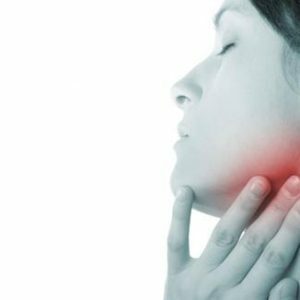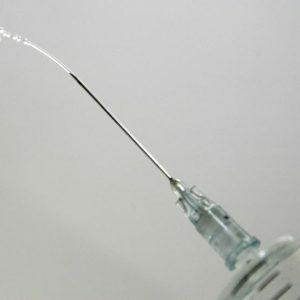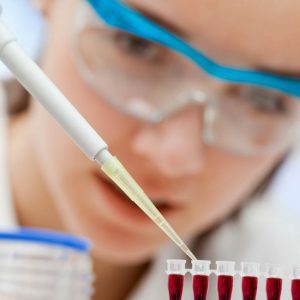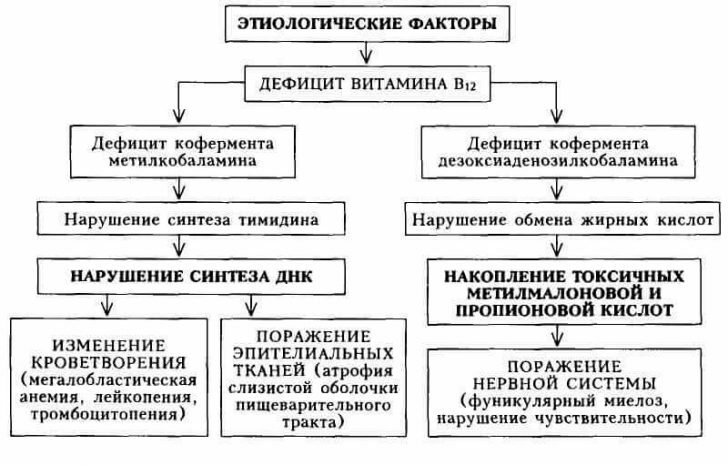Lymphadenitis: Symptoms, Causes and Treatment
Diseases leading to specific lymphadenitis:
- venereal diseases - syphilis, gonorrhea;
- actinomycosis;
- tularemia;
- tuberculosis;
- plague;
- anthrax.
Note: in some cases, the primary focus can not be found, because by the time of lymphadenitis it can be eliminated( including spontaneously).
Inflammation of the lymph node creates a barrier that prevents the further spread of bacteria.
This pathology does not exclude the development of septic complications, which present a serious threat to the health and life of the patient.
Symptoms of lymphadenitis
The first manifestations of acute nonspecific lymphadenitis become local swelling and tenderness of the node.Its consistency at palpation - densely-elastic.Against the background of catarrhal and hyperplastic forms, complaints that indicate an organism's intoxication are poorly expressed or nonexistent.Pain when probing the site is insignificant. Pathology often accompanies lymphangitis - inflammation of regional lymphatic vessels.
Manifestations of purulent process:
-
 increased node density;
increased node density; - blurred contours of the inflammatory focus;
- local hyperemia and swelling;
- general weakness;
- fever and febrile reaction( chills, fever, sweating);
- headache;
- decreased appetite.
The patient is forced to restrict movement in certain parts of the body so as not to cause an increase in the pain syndrome.
With purulent melting, there is such a sign as fluctuation( rolling of fluid during palpation of the inflammation zone).
The manifestation of the breakthrough of the abscess with the formation of adenophlegmonia is the detection of diffuse dense infiltrate with individual softened fragments.
Presence of crunches on palpation( gas crepitation) indicates putrefactive form.
With septic meltdown of the node, signs of general intoxication sharply increase - moderate or high fever and tachycardia are revealed.
Possible complications of purulent process:
- thrombophlebitis;
- mediastinitis( inflammation of the mediastinum);
- septicopyemia( blood poisoning);
- the formation of lymphatic fistulas( with the breakthrough of an abscess in the esophagus or bronchi).
In the chronic course of the flow, the lymph nodes increase in size, the is gradually compacted.But at the same time they are clearly delimited, and not fused with the surrounding tissue structures.Over time, the lymph node shrinks, its own tissue is scarred and replaced by a connective.
Severe chronic processes are manifested by severe swelling, as a result of the problem of lymph circulation - stagnation.Over time, there is a characteristic manifestation - elephantiasis.
Specific lymphadenitis also has its peculiarities:
- with gonorrheal form, inguinal nodes are excessively painful and enlarged;
- tubercular form gives a strong weakness( due to intoxication) and a sharp increase in temperature, which can last for a long time, inflames surrounding tissues;
- The syphilitic nature of inflammation occurs as a one-way process.Lymphonoduses resemble a "chain".When feeling, they are free, not soldered, and seldom happen with pus.
Diagnostic criteria for lymphadenitis
 It is not difficult to suspect development of catarrhal and uncomplicated lymphadenitis.A simple examination, collection of complaints and palpation of the nodes make it possible to make a preliminary diagnosis.
It is not difficult to suspect development of catarrhal and uncomplicated lymphadenitis.A simple examination, collection of complaints and palpation of the nodes make it possible to make a preliminary diagnosis.
It is more difficult to correctly identify the disease with concomitant periadenitis, as well as the adenoflegmon attachment, especially if the inflammatory process extends to the mediastinal tissue, to the retroperitoneal region.In these cases, the task of the diagnostician is to find the primary focus, only in this case further and successful treatment is possible.
If tuberculosis lymphadenitis is suspected, tuberculin tests and puncture testing should be performed.The goal is the detection of specific giant cells that bear their name by the surnames of the scientists who discovered them - the Pirogov-Langhans cells.Characteristic changes are also observed in the radiography of chest cavity organs, including calcifications.
Syphilitic lymphadenitis requires examination of the punctate for the presence of pale treponem( pathogens of this disease).
For a more accurate diagnosis, a collegial examination of patients is often conducted with the involvement of narrow specialists - venereologists, phthisiatricians and other doctors.
Acute lymphadenitis should be distinguished from osteomyelitis, phlegmonous foci, suppuration in the subcutaneous fat, complicated by pyogenic athere infection.
To clarify the diagnosis, carry out:
- node biopsy;
- ultrasonic diagnostics of lymphocytes;
- computed tomography;
- MRI of affected areas;
- Radiographic contrast angiography
Features of lymphadenitis in children
Common causes of lymphadenitis in children:
- diseases of ENT organs( tonsillitis, tonsillitis, otitis media);
- ARVI( including influenza);
- exudative diathesis;
- pustular inflammation of the skin( pyoderma);
- children's specific infections( mumps, scarlet fever, diphtheria).
The main difference between pediatric lymphadenitis is an excessively rapid onset, severe course, temperature jumps to high numbers, marked intoxication. Without proper treatment, the process often turns into a generalized form( sepsis)
Treatment of lymphadenitis
Treatment tactics are chosen based on the form of the disease, stage and other characteristics.
Conservative therapy includes:
-
 treatment of underlying disease;
treatment of underlying disease; - antimicrobial treatment( antibiotics and sulfonamides) - at the maximum dose, after determining the sensitivity of the microbial flora.Antibiotic therapy involves the use of drugs directed at both nonspecific( staphylococcus, streptococcus) and specific pathogens( gonococcus, treponema, tuberculin rod, etc.);
- detoxification( Hemodez, Reopoliglyukin, Reamberin);
- the appointment of complex vitamins containing all their basic types;
- physiotherapy - UHF;
- rest assurance;
- diet therapy - restriction of salt, roast, smoked.
Therapeutic treatment is recommended for catarrhal acute lymphadenitis, without serious complications.
Surgical treatment involves opening the focus and sanitizing the abscess cavity and phlegmon, followed by drainage of the wound and local administration of antimicrobial agents and antiseptics.
Prophylactic measures and prognosis for lymphadenitis
The outcome of lymphadenitis depends on its form and the well-timed prescribed treatment of .After the transferred diseases, scar tissue can develop in the area of the lymph node, functional violation of lymphatic drainage and lymphatic edema( lymphedema).
In order to avoid the development of lymphadenitis, it is necessary to treat microdamages, wounds, erosive surfaces, ulcers, to treat sick teeth, inflammatory diseases of the throat( sore throats, pharyngitis), skin( furuncles, panariciums) in time.
Vladimir Plisov, doctor, medical reviewer



